The AMD Threadripper 2 Teaser: Pre-Orders Start Today, Up to 32 Cores
by Ian Cutress on August 6, 2018 9:00 AM ESTEnough Jibber-Jabber, Show Me the Money Chips
All-in-all, the new chips look a lot like the old ones:
AMD sampled us the 2990WX and the 2950X for our launch day review. Both of these CPUs are coming out in August, first with the 2990WX on the 13th, and then with the 2950X on the 31st.
On the rear, there are slightly different component arrangements to account for the different dies that are active:
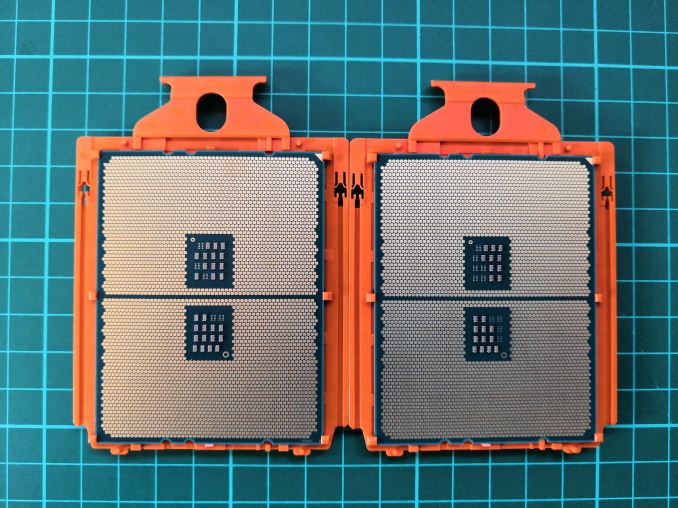
2990WX (left) and 2950X (right)
The packaging is certainly different, with AMD taking into account the public's commentary about the packaging from the first generation. My only feedback to AMD on this is to make the new CPU packaging stackable – as a reviewer having these chips around un-stacked is an organizational nightmare.
Also in the box is a Torx screwdriver for the socket and an Asetek water cooler bracket, as with the first generation.
If we add some EPYCness to the mix, there’s a pretty pattern. Here are 172 cores of Zen:
AMD also bundled two motherboards with the press kits: a second revision of the ASUS X399 Zenith Extreme, with a new VRM cooling kit, and the MSI X399 MEG Creation, the 19-phase monster seen at Computex.
At first, Summer wasn’t interested.
Then she had a sniff.
Now they are good friends. I think. (ed: Ian, if you kill that processor with static electricity, I will end you)
A side note about stacking. The processors do kind of stack on their own.
But this isn’t an advised strategy.


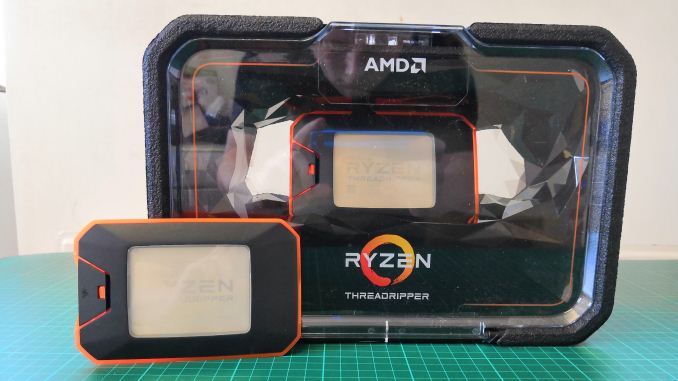
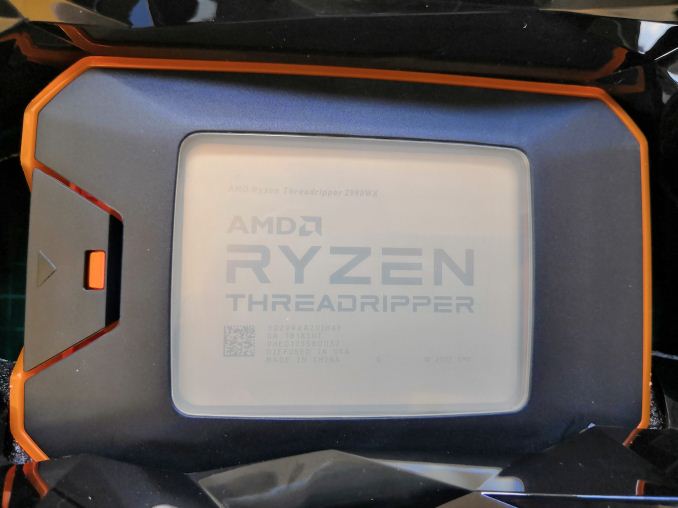
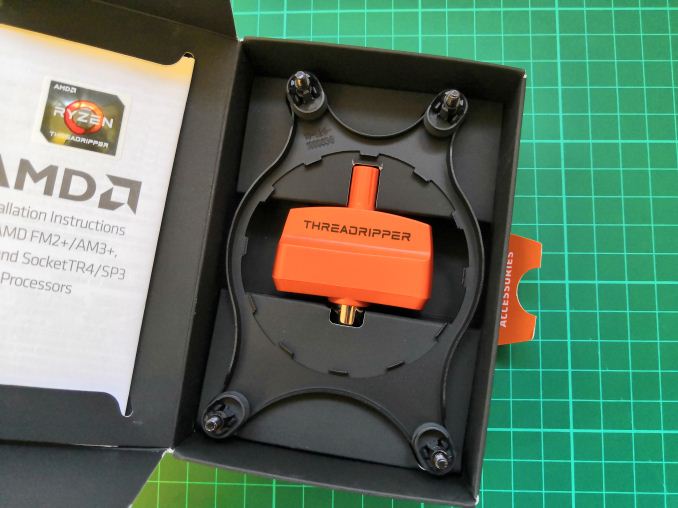
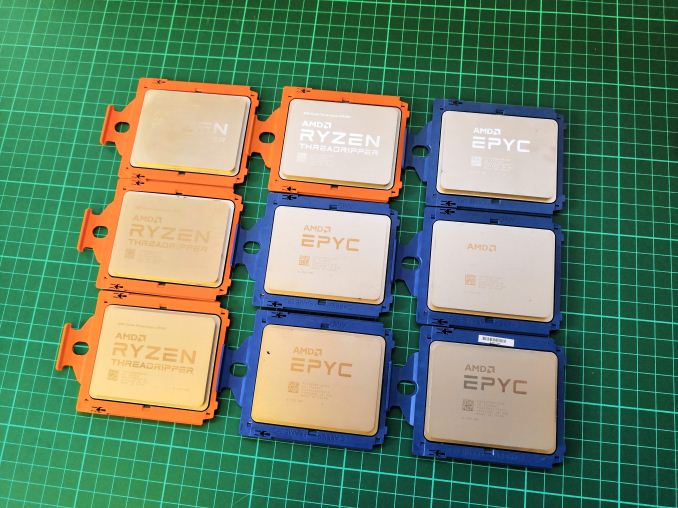
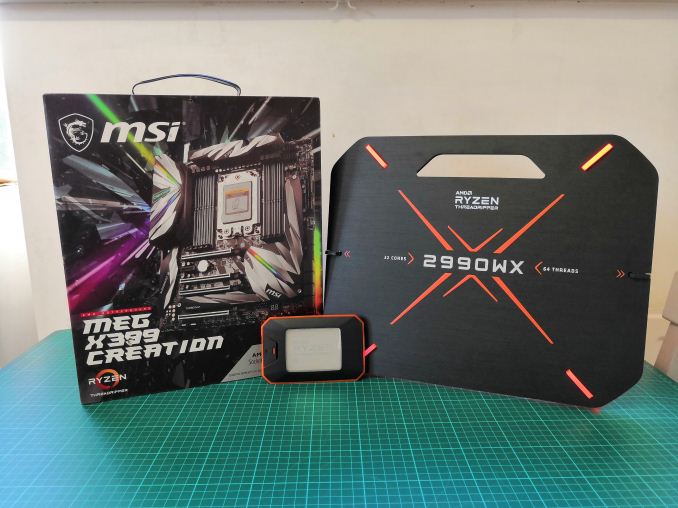
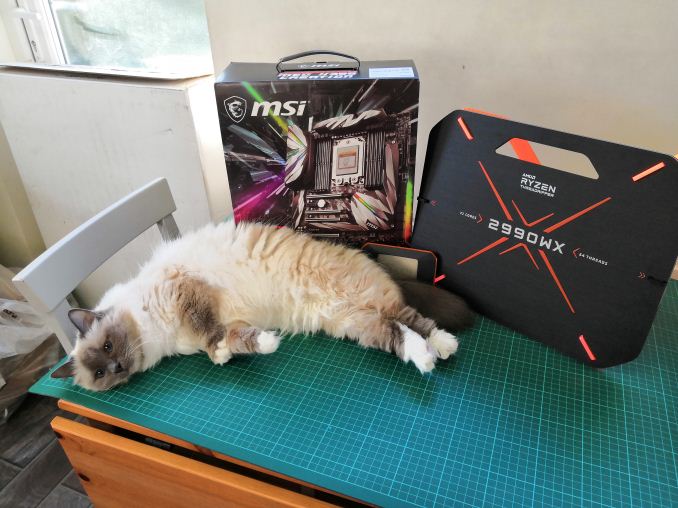



_thumb.jpg)
_thumb.jpg)
_thumb.jpg)
_thumb.jpg)
_thumb.jpg)
_thumb.jpg)








101 Comments
View All Comments
SetiroN - Monday, August 6, 2018 - link
The memory configuration is going to be a huge bottleneck.Just try you try to use a 32 core Epyc with only 4 channels populated: performance it's hindered so badly you end up making very little use of the additional cores unless you're not accessing memory at all.
This all feels like an afterthought.
artk2219 - Monday, August 6, 2018 - link
So you're telling me AMD is shaving off features from their more expensive server parts so that theres some market differentiation? For shame! Seriously though, it is annoying that TR4 and SP3 are "2 different sockets", would have been nice to be able to use Epyc's in TR4.drajitshnew - Monday, August 6, 2018 - link
My "guess" is that while TR4 ( SP3R2) and SP3 are both 4094 pins, in TR4 the pins leading to the 2nd 2 processors are just that-- pins. They are just for physical support & are not electrically connected to anything. Hence, to maintain backwards comptibility AMD disabled the memory & PCIE of the second pair of dieseastcoast_pete - Monday, August 6, 2018 - link
While I also believe that there is no such thing as too much computing power, the 32 (and 24?) core TRs are the CPU equivalents of a 1,000 HP engine in a car: great for bragging rights, but only useful in very specific situations, and otherwise not faster than mere 8 core chips. In this case, the applications where 32 cores can make a difference are those that are not that dependent on memory speed/access. I would love to see some benchmarks for compiling and complex CAD situations.Overall, the question is/remains how well AMD executed on this second round of "NUMA on a chip".
Lastly, about EPYC vs. TR: AMD learned from the master (Intel). It's not about not letting people run server chips on desktop boards, it's about blocking people from doing the opposite: using much less expensive desktop CPUs in server boards and for server applications. That is also why desktop CPUs and chipsets basically never support ECC RAM, which is a requirement for many servers. TR is almost "EPYC", but just not quite, so you still have to buy EPYC and pay epic prizes for your servers. But than, Intel does the same, and gouges us even worse.
mapesdhs - Monday, August 6, 2018 - link
Not sure how these are about blocking people from doing the opposite, since they do support ECC, so surely one could use these CPUs just as they are with a good quality consumer mbd and they'd do just fine for a wide range of server tasks, using ECC memory if desired. If companies cared about cost that much then this is an option. Most though won't do that. There's a belief that companies will cram a consumer chip onto a pro board if they can, but really that's very rare as most bulk buyers of workstations and servers get them from OEMs, very few build their own.Nobody's gouging anyone btw, it's still a free market choice whether to buy Intel or not.
smilingcrow - Monday, August 6, 2018 - link
In theory TR boards can support ECC but I've heard reports that validation of ECC RAM is not exactly a priority and with all the work Ryzen boards required regarding RAM that's not a surprise.So anybody here built a TR ECC system and how did you get on? 1st hand reports are always better.
Oxford Guy - Tuesday, August 7, 2018 - link
ECC RAM is sold at slower speeds than typical enthusiast RAM. I fail to see why validation would be necessary. The fastest ECC RAM I know of is only 2666. If there is anything faster it should still fit within the TR2 spec.imaheadcase - Monday, August 6, 2018 - link
So why did the CPU race slow to a crawl now for years? Have we actually reached a "safe" limit for CPUs until some new tech can make it faster? I know the need isn't as great as it used to be, but remember the days that CPU speed leaped so much each generation..like 500mhz jumps each new CPU it seemed. Now we are seeing boosts..which is basically like saying "We can go this high, but its just a limit because we not sure of ourselves".DigitalFreak - Monday, August 6, 2018 - link
Two reasons come to mind - technology and competition. It's becoming increasingly difficult to go to smaller process nodes (see Intel 10nm) which are necessary to make faster chips. As to competition, Intel hasn't had any until AMD's Zen architecture. They're not going to put a lot of money into R&D if they don't have to. Unfortunately for them, AMD caught them with their pants down, and their 10nm process has had nothing but problems.DigitalFreak - Monday, August 6, 2018 - link
*which are necessary to make faster chipsFaster chips without crazy heat output and power requirements, or huge die sizes.